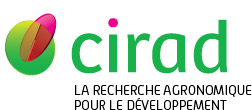Desquesnes Marc, Bouyer Jérémy, Charoenwiryapaph Theeraphap, Duvallet Gérard, Jittapalapong Sathaporn.
2014. Mechanical transmission of blood pathogens by biting insects:from experimentation to mathematical model; news and perspectives.
|
Version publiée
- Anglais
Accès réservé aux personnels Cirad Utilisation soumise à autorisation de l'auteur ou du Cirad. Mechanical transmission of blood pathogens by bitting insects.pdf Télécharger (14kB) | Demander une copie |
Résumé : Biting insects such as tabanids and stomoxes are present worldwide in all kinds of landscapes and climates. In humans and animals, these insects are not only blood feeders and annoying pest, they are also acting as mechanical vectors of a number of pathogens, some of them being zoonotic agents, including bacteria, viruses and parasites. To assess the importance and main parameters of mechanical transmission, we performed a series of experiments on mechanical transmission of African trypanosomes by Atylotus sp. (Diptera: Tabanidae). The main parameters were either quantified (parasitaemia, insect burden, daily prevalence) or estimated (unknown parameters), and a mathematical model was developed. Within 3 weeks of exposure to insect bites, the incidence of the infection was above 60%, which demonstrated the efficiency of mechanical transmission. Number of insects and level of pathogens in the blood were the main parameters of transmission, which proved to occur when the pathogenemia was above 100.000 infective doses per ml of blood. Stomoxys would not only act as immediate transmitter, such as tabanids, they are also suspected of delayed transmission by regurgitation of blood from crop or gut, which may considerably impact their role in the epidemiology of the diseases they transmit. Mathematical models could be adapted to various pathogens, providing their specific parameters be established in experimental conditions. Based on a better knowledge of their nuisances and their biology, new means of control of tabanids and stomoxes are currently under study to specifically attract these insects to traps or toxic targets.
Auteurs et affiliations
-
Desquesnes Marc, CIRAD-BIOS-UMR TRYPANOSOMES (THA)
 ORCID: 0000-0002-7665-2422
ORCID: 0000-0002-7665-2422
-
Bouyer Jérémy, CIRAD-BIOS-UMR CMAEE (SEN)
 ORCID: 0000-0002-1913-416X
ORCID: 0000-0002-1913-416X
- Charoenwiryapaph Theeraphap, Kasetsart University (THA)
- Duvallet Gérard, CNRS (FRA)
- Jittapalapong Sathaporn, Kasetsart University (THA)
Source : Cirad-Agritrop (https://agritrop.cirad.fr/591937/)
[ Page générée et mise en cache le 2025-05-21 ]




